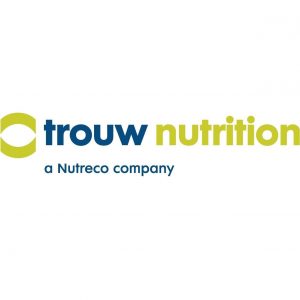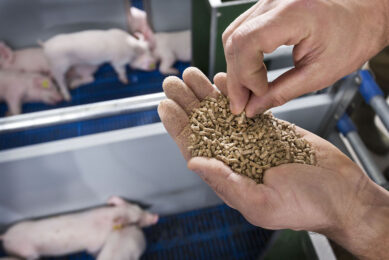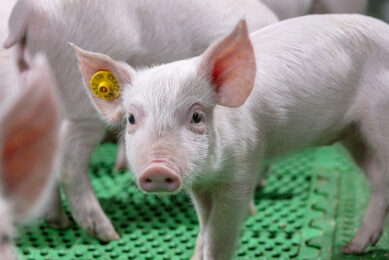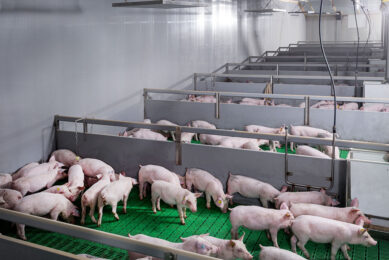What drives intake, gut health and performance?
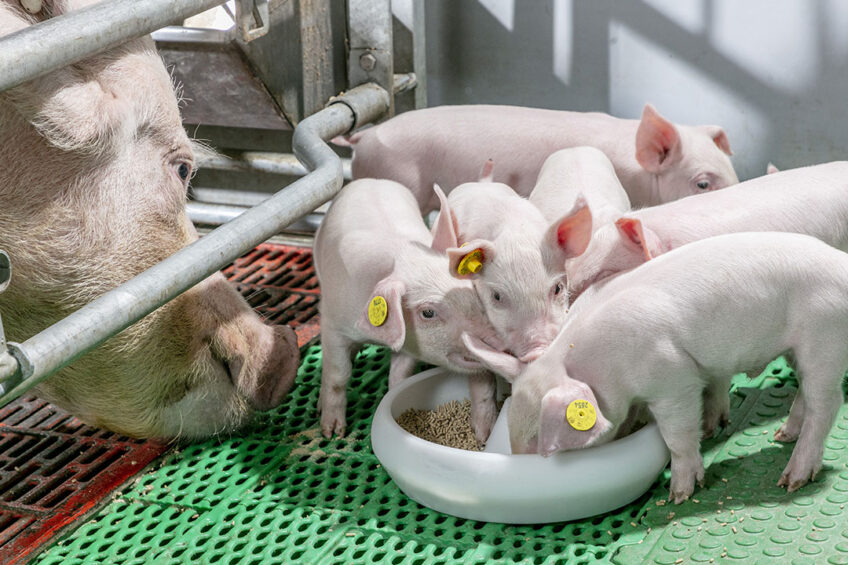
Piglets can be selective when eating. Especially just after weaning, it can pay off to know what the animals prefer, to encourage feed intake, gut health and good performance. Which aspects should producers take into consideration?
Depending on personal taste, black liquorice, cilantro, olives or hot sauce might be an automatic pass when ordering food. Piglets can be just as selective when it comes to what they will and won’t eat. As consistent feed intake is essential to piglets’ post-weaning gut health and development, understanding the factors that inform their decision to eat is critical when formulating diets. Factors that influence piglets’ feed intake include management practices such as creep feeding, ingredient quality and safety, innate ingredient preferences, aversions to antinutritional factors and the use of feed production technologies to inform somatosensing (mouthfeel).
In natural settings, piglets can use their selective behaviour more readily than in production environments where only a single feed is provided. The combination of selectivity and lack of control in feed may reduce or even stop feed intake, especially during stressful periods. Research shows that the consequences of reduced feed intake go beyond disrupting weight gain. A study found that piglets orally infected with Escherichia coli suffered reduced feed efficiency only when their feed intake dropped below a certain threshold, indicating adequate feed intake is essential for minimising the risk of gut health disorders.
Poor feed intake can start weaning piglets on a lifelong path for poor production. Research indicates that piglet quality by 10 weeks predominately establishes lifetime performance.
As improving piglet feed intake can support gut health and performance, it can also support production efficiencies. Maintaining feed intake is related to other key aspects of piglet nutrition, including preventing pathogenic bacterial intake, supporting digestion, strengthening gut barrier function and stabilising microbiota and immune system function.
Several practices can support feed intake. From a management standpoint, providing a piglet-tailored, highly palatable feed prior to weaning is an important training mechanism to establish and encourage post-weaning eating behaviour and helps the digestive system develop. Evaluating feed palatability criteria is another good practice. The best diet in the world is no good if piglets will not eat it.
Considering the following elements of palatability helps producers ensure they’re providing a palatable feed capable of supporting piglet feed intake.
Olfaction
Pigs have a sophisticated sense of smell developed to detect nutritious feed ingredients. This ability helps piglets provide a rough check on feed quality – detecting, for example, if lipid oxidation has occurred in a feed. Ensuring feed safety and ingredient quality is a straightforward way to address this factor of feed design. Also, ensuring that there are not off odours in feed by encapsulating fats and through judicious use of antioxidants can help avoid this pitfall.
Taste
Piglets have a well-developed sense of taste and more taste buds than most other mammals, which creates a complicated set of taste receptors along the mouth and oral cavity. Piglets can distinguish a range of flavours including sweet, sour, salty, bitter and umami; the complex sensory network then interprets these flavours into taste quality. However, the complexity of this system can make it hard to determine how some feed ingredients will be received – especially regarding fibre sources. For example, some types of oats can help stimulate feed intake, while other fibrous ingredients may have antinutritional elements that carry a bitter taste and can decrease feed palatability and intake. Evolutionarily, bitterness in taste can indicate the presence of a toxin. When assessing piglets’ responses to specific, individual feed ingredients, it is possible to establish preferred ingredients including protein sources, cereals and organic acids. Some common ingredients and antinutritional factors, which can decrease feed palatability, are beans containing lectins, cottonseed meal which has gossypol, rapeseed meal containing glucosinolates and potato protein containing alkaloids.
Additionally, determining how piglets will respond to the taste of any feed ingredient can be made more challenging as the taste acuity for humans and piglets does not always correspond. Some feed ingredient studies have found that humans identify certain sweet compounds, like the artificial sweetener saccharine, much more strongly than piglets do. The discrepancy means that humans are not the best determiners of how ingredients will taste to piglets. Addressing this issue in feeds can be through a two-pronged approach. First, ingredients with bitter tastes should be avoided and, second, ingredients trialled in swine and known to provide a positive taste experience should be emphasised – especially in feeds for young pigs.
Peripheral nutrient sensing
In addition to a well-developed sense of smell and taste, pigs also have receptors for nutrient detection in the gastrointestinal tract (GIT). This additional detective ability is known as peripheral nutrient sensing. The sensors are thought to help determine satiety and the metabolic regulation of feed intake based on connections to the nervous and endocrine systems.
Somatosensing or “mouthfeel”
The final area that can trip up a diet and move it into the “I won’t eat that” category is mouthfeel, or the actual sensation provided by ingesting the feed. This aspect of the feed is linked to piglets’ nervous pathway and can trigger the pain centre. This can be an area for special consideration because piglets’ deciduous teeth erupt in the first 10 weeks, meaning hard-to-chew or crunchy feeds could be physically painful to consume.
Although liquid feeds could be a way to address this challenging period, they tend to need specific formulations to support even and stable growth. However, previous texture-focused work has identified that piglets prefer moist food to dry and choose warm over cold and soft over hard feed, so many desirable elements for feed have been identified. Providing a feed that focuses on including positive attributes helps support feed intake.
Additional challenges
Beyond palatability concerns, there is the hurdle of transitioning piglets from sow’s milk to a completely different food. Young pigs can be prone to food neophobia, or distrust of unknown feeds and flavours. Stressful periods, like weaning, can heighten this response, which emphasises the importance of providing compound feeds in the pre-weaning period (also called creep feeds). Dramatically changing flavours or feed palatability, especially at weaning, can threaten a drop in feed intake, destabilise piglet gut health and adversely influence performance. Using a common set of flavours across diets can help avoid a drop in feed intake post-weaning.
Decades of in vitro and in vivo research providing insights on how piglets decide what to eat led Trouw Nutrition to develop the Milkiwean Vital Start feeding programme. The highly palatable diet has been specifically formulated to account for mouthfeel and was developed to include a flavour and aroma profile that encourages piglets to eat. Assuring adequate feed intake is a foundational strategy for helping piglets navigate the weaning transition.
Selecting a diet that prioritises feed intake can help protect piglet gut health and set the stage for lifetime performance.


